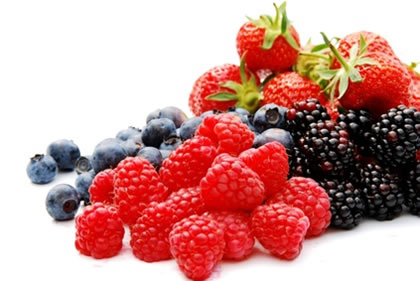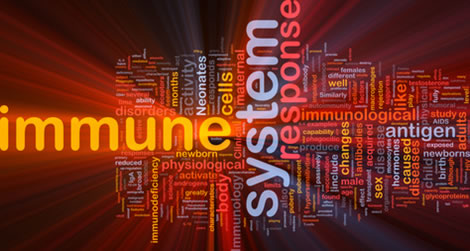Damiana (Turnera diffusa) is a relatively small shrub that produces small, aromatic flowers. The aromatic leaves of this small shrub have amazing medicinal properties and have been used with a long history. The leaves of the damiana plant are used for medicinal purposes.
Damiana Benefits
Damiana has as strong reputation for improving sexual function for men and women. Animal studies have indicated antihyperglycemic, anti-inflammatory, and indomethacin-inhibiting properties. According to The British Herbal Pharmacopoeia, damiana is used for anxiety neurosis with a predominant sexual factor, depression and coital inadequacy.
Libido
Damiana has long been claimed to have a stimulating effect on libido, and its use as an aphrodisiac has continued into modern times. The active alkaloids in damiana may have a testosterone-like effect in your body, and this may be responsible for damiana’s ability to raise libido in both men and women. It was included in the National Formulary in the United States from 1888 to 1947, of its effect on sexuality and sexual dysfunction. Damiana leaf has been shown to increase circulation and sensitivity in the penis and clitoris, as well as stimulate sexual desire. In animal studies, extracts of damiana speeded up the mating behavior of sexually sluggish or impotent male rats.
Depression
 Damiana has been shown to help boost energy and reduce the effects of exhaustion. Has also been proven that damiana contains properties that can help ease anxiety and depression for it has anti-depressant properties that can greatly help individuals that are depressed and anxious. In Germany damiana is a popular herbal remedy for stress or nervous disorders. Because of this quality, it has been prescribed as a herbal remedy for those suffering from mild to moderate depression. Poor blood flow can increase lethargy and chronic exhaustion so taking a stimulant such as damiana may help to restore energy and vitality.
Damiana has been shown to help boost energy and reduce the effects of exhaustion. Has also been proven that damiana contains properties that can help ease anxiety and depression for it has anti-depressant properties that can greatly help individuals that are depressed and anxious. In Germany damiana is a popular herbal remedy for stress or nervous disorders. Because of this quality, it has been prescribed as a herbal remedy for those suffering from mild to moderate depression. Poor blood flow can increase lethargy and chronic exhaustion so taking a stimulant such as damiana may help to restore energy and vitality.
Testosterone
An alkaloid in damiana acts like the male hormone testosterone. A study conducted by the U.S. Department of Agricultural Research showed that damiana leaves have the potential to raise testosterone levels. In-vitro tests also indicate that damiana extracts inhibit the aromatase enzyme responsible for testosterone conversion to estrogen and induce smooth muscle relaxation.
Menstruation
Damiana leaf has been used to relieve painful menstruation and other sorts of hormonal difficulties. By regulating hormonal levels, damiana helps to alleviate symptoms such as hot flashes and night sweats. Damiana has a balancing and normalizing effect on the hormones and thus is a very useful herb to bring natural relief from many of the discomforts of menopause. It controls hot flashes, and helps to balance hormones in women. Damiana is believed to possess phytohormonal compounds that may be able to balance hormones and strengthen the reproductive organs in women. One study suggests that damiana may have plant compounds with effects similar to those of progesterone.
Blood Sugar & Antiinflammatory
Damiana’s traditional use for diabetes has been studied by scientists as well. The herb’s hypoglycemic properties were documented by Mexican scientists in 1984. A 1984 study published in the December edition of the Journal of Ethnopharmacology found that a damiana leaf may help lower blood sugar levels in patients with diabetes. Damiana’s antiulcerogenic effect may be due to both its antiinflammatory action as well as its ability in increase gastric mucus secretion. Within the genitourinary system, damiana acts as an astringent and detoxifier, tackling preexisting urinary tract diseases.
Damiana Dosage
Pour one cup of boiling water over one teaspoonful of dried leaves and let infuse for 10 to 15 minutes. Daminia leaf tea is bitter, and is often blended with sweeter herbs. As a capsule, take 400 to 800 mg capsules up to three times daily.
Damiana Leaf Side Effects
Damiana side effects although rare, allergic reactions to damiana may occur. Higher doses may cause mild diarrhea. Damiana use reduces absorption of iron in some instances. Damiana can affect glucose levels and should be used with caution. Diabetics who take hypoglycemic medications should monitor blood glucose levels closely while using Damiana. Damiana may interact with herbs and supplements that alter progestin. If you are on any medications, check with your doctor first before using this product.
 The anti-inflammatory effects of anthocyanins can help lower the risk of degenerative diseases such as Alzheimer’s, atherosclerosis and osteoporosis.
The anti-inflammatory effects of anthocyanins can help lower the risk of degenerative diseases such as Alzheimer’s, atherosclerosis and osteoporosis. Medical treatment of UTIs involves the use of antibiotics. While these drugs are usually effective, curing most infections, have some serious negative effects. These drugs kill off friendly bacteria living in the gastrointestinal (GI) tract, antibiotics can cause side effects, such as constipation, diarrhoea, and nausea. Also, the use of antibiotics promotes the development of bacterial species that are able to resist these drugs. Bacteria are very clever in their ability to mutate genes, making themselves immune to the effects of antibiotics. Bacteria that have become immune then pass this ability on to their offspring or other bacteria. If a bacterium carries several resistance genes, it is called multidrug resistant or, informally, a
Medical treatment of UTIs involves the use of antibiotics. While these drugs are usually effective, curing most infections, have some serious negative effects. These drugs kill off friendly bacteria living in the gastrointestinal (GI) tract, antibiotics can cause side effects, such as constipation, diarrhoea, and nausea. Also, the use of antibiotics promotes the development of bacterial species that are able to resist these drugs. Bacteria are very clever in their ability to mutate genes, making themselves immune to the effects of antibiotics. Bacteria that have become immune then pass this ability on to their offspring or other bacteria. If a bacterium carries several resistance genes, it is called multidrug resistant or, informally, a  Fucoidan is a sulfated polysaccharide found in brown algae; it has been shown to exhibit a number of biological effects, including anti-tumor effects. A French research study in 2002 showed that F-fucoidan can inhibit hyperplasia in rabbits. A Japanese research report in 2005 indicated that F-fucoidan can induce apoptosis in human lymphoma cell lines.
Fucoidan is a sulfated polysaccharide found in brown algae; it has been shown to exhibit a number of biological effects, including anti-tumor effects. A French research study in 2002 showed that F-fucoidan can inhibit hyperplasia in rabbits. A Japanese research report in 2005 indicated that F-fucoidan can induce apoptosis in human lymphoma cell lines.